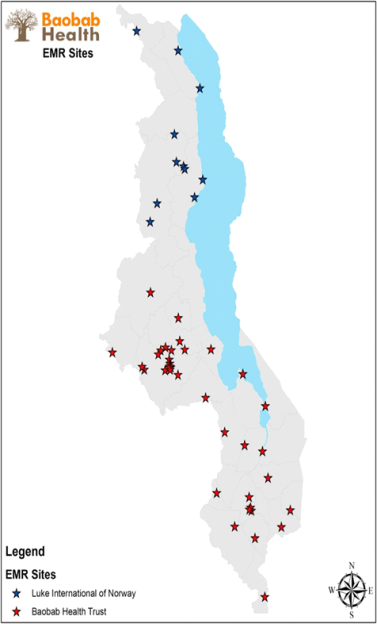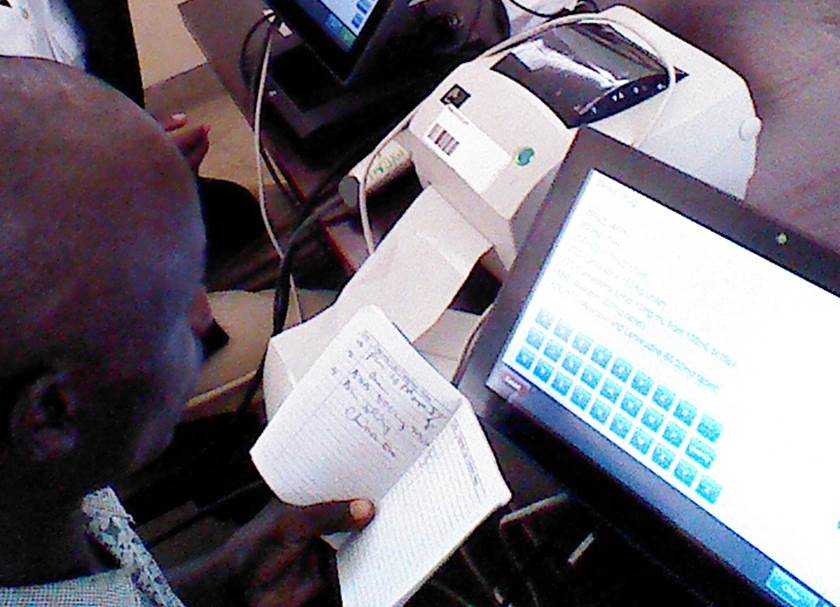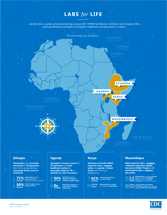Innovative Electronic Medical Record System Expands in Malawi

Instituting an Electronic Medical Record System reduces the need to manage and store growing volumes of patient charts, a major challenge in resource-limited settings.
Keeping track of even one patient undergoing treatment for HIV/AIDS can be complicated. Doing it for over 472,865 patients when you’re a low income country coping with high demand and a sputtering economy magnifies the complexity. Which is why Malawi’s story – and its solution – is attracting attention and praise. It’s a story of how Electronic Medical Record System (EMRS) technology is being used and the foresight needed to bring it to reality.
You don’t have to look far to see the positive results. Walking into one of the busiest HIV/AIDS clinics in the nation, with an annual facility volume of approximately 13,957 patients enrolled and receiving antiretroviral treatment (ART), clients seamlessly transition from point to point as clerks and clinicians use bar-code scanners and touch-screen computers.
At every step health care workers query the EMRS to retrieve information from previous appointments and instantly record new information. At the end of the visit, a label with information from the visit is affixed to the patient’s health passport, which acts as a vehicle for sharing information within or between health care facilities.
Building Malawi’s EMRS

Malawi’s National EMRS operates in all regions of the country.
Getting to this point wasn’t easy. The system’s origins date back to 2006 when Malawi’s Ministry of Health’s (MOH) Department of HIV/AIDS, CDC-Malawi, and Baobab Health Trust first raised the possibility of electronic record keeping . Following a successful hospital-based pilot, the Malawi national EMRS was launched and has evolved significantly since then, along with the number of partners and participants. CDC-Malawi, through funding from the U.S. President’s Emergency Plan for AIDS Relief (PEPFAR) and other donors remains committed to its sustainability.
Baobab Health Trust is a Malawi organization and is CDC’s primary partner responsible for expanding the system nationwide. Since 2012, Luke International became responsible for expansion into the Northern region of the country. Integral to the EMRS implementation are collaborative partnerships with the Malawi’s Ministry of Health (MOH) and the National Registration Bureau. Informatics, quality improvement, epidemiology, and surveillance, technical assistance are provided by University of Pittsburgh , Maikhanda Trust , and CDC’s Division of Reproductive Health and National Center for Health Statistics.
Since the original pilot demonstration in 2006, the EMRS has grown from 19 facilities in 2012 to 50 HIV/AIDS health care providers in all regions of the country.
These facilities provide care for 41% of all HIV-infected persons receiving care or treatment in Malawi or over 180,000 individuals. By September 2014, the plan is to increase the number of EMRS sites to 54 health facilities out of a total of 85 HIV high burden sites. To date, more than 1,500 healthcare workers have been trained in using the national EMRS at the point of care.
Future directions

Instituting an Electronic Medical Record System reduces the need to manage and store growing volumes of patient charts, a major challenge in resource-limited settings.
As the EMRS expands across the nation, its functions are evolving in response to changing national information needs. Currently, 39 health facilities are equipped to electronically capture patient information and report health indicators as part of Malawi’s Health Management Information System (HMIS). More recently, the President’s Malaria Initiative is investing in the reuse of EMRS data for routine malaria surveillance at the facility level.
Developing laboratory information systems is another critical priority for the nation and the EMRS platform is again the opportunity for realizing a pilot demonstration at a Central and District hospital. Developing information systems for non-communicable diseases has resulted in hypertension and diabetes modules for improved clinical management and represent emerging surveillance systems for Malawi. Other evaluation and research projects benefit from the National EMRS with more recent protocols concerned with understanding hypertension management among HIV/AIDS patients and improving retention among people living with HIV.
With a strategic eye on the future, the National EMRS was recently evaluated according to sustainability principles. Findings suggest the national EMRS’ sustainability model is donor driven and this is typically characteristic of developing country programs. Strategic priorities focus on capacity development, strengthening linkages with Ministerial programs, and optimizing EMRS use for public health research, learning and practice. Further informing sustainability decision-making, research and evaluation seek to understand EMRS efficiencies and cost-effectiveness for knowledge integration and technology transfer.
Date: 2014
Malawi Country Page
Labs for Life Infographic:

Get email updates
To receive email updates about this page, enter your email address:
Contact Us:
- Centers for Disease Control and Prevention
1600 Clifton Rd
Atlanta, GA 30333 - 800-CDC-INFO
(800-232-4636)
TTY: (888) 232-6348
24 Hours/Every Day - Contact CDC-INFO
 ShareCompartir
ShareCompartir


